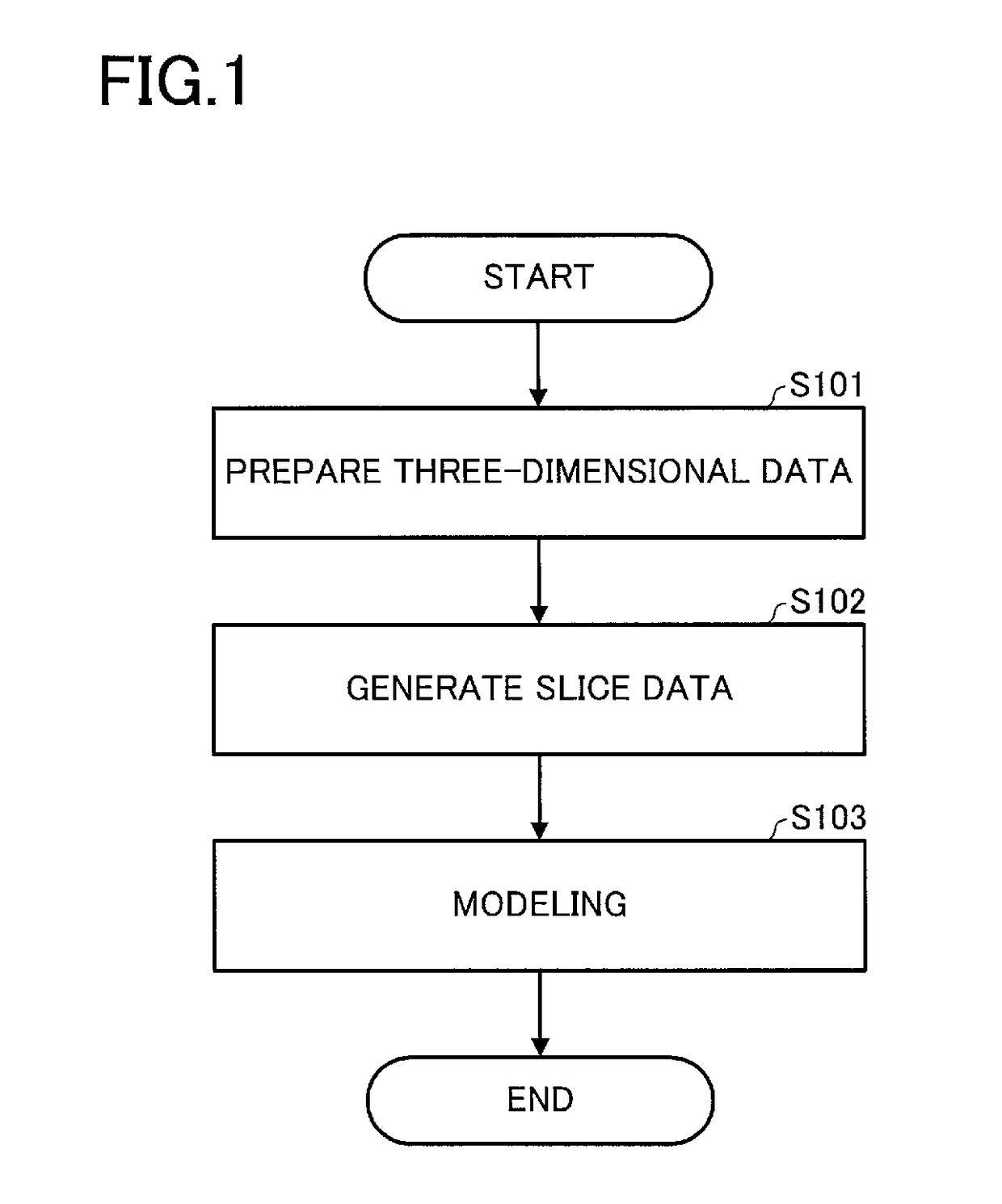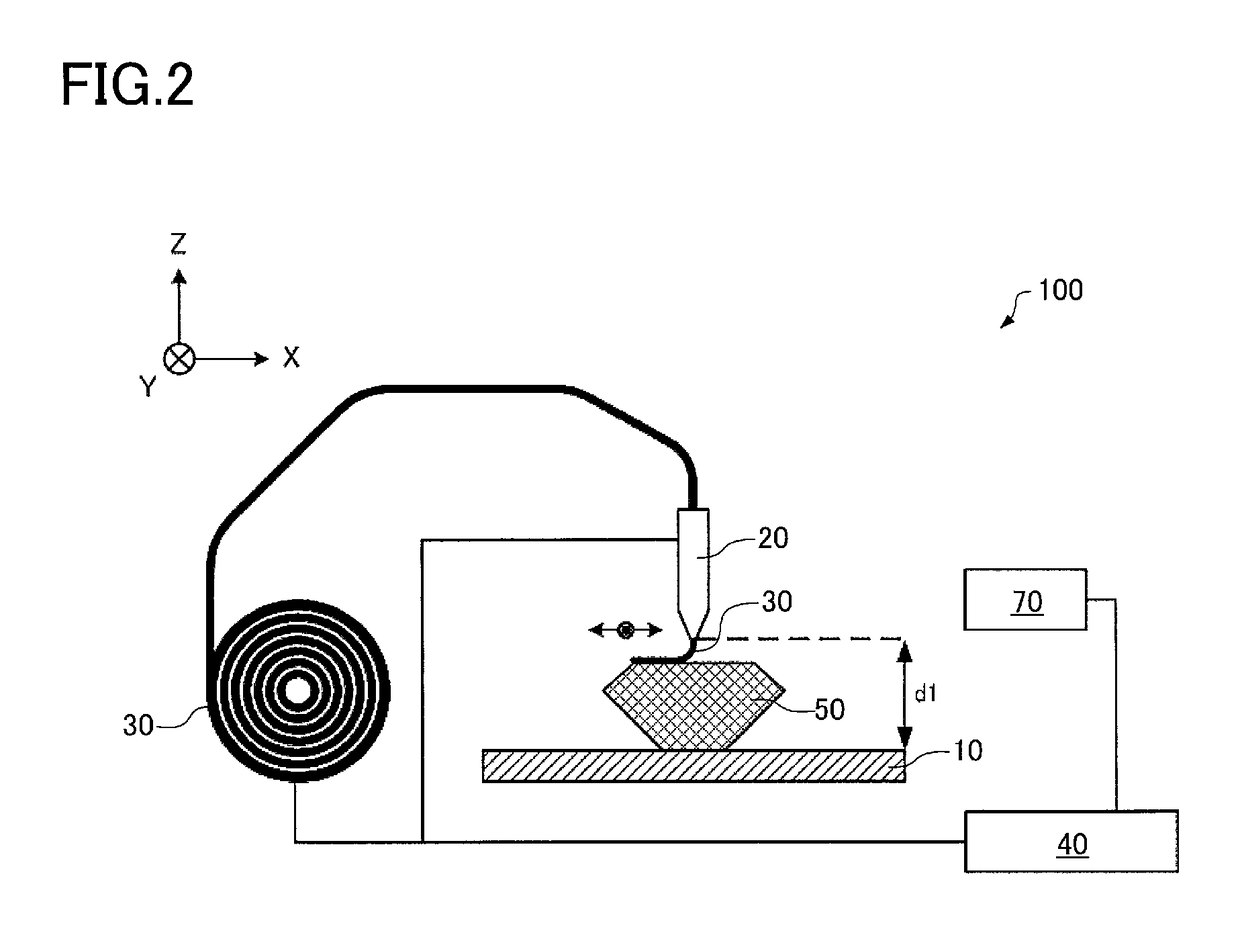Method for producing object
a three-dimensional object and resin material technology, applied in the field of methods for producing objects, can solve the problems of inability to achieve desired strength and difficulty in high accuracy when producing three-dimensional objects using resin materials, and achieve the effect of improving accuracy and strength of objects
- Summary
- Abstract
- Description
- Claims
- Application Information
AI Technical Summary
Benefits of technology
Problems solved by technology
Method used
Image
Examples
application example 1
[0041]According to one embodiment of the invention, a method for producing an object includes forming and laying N unit layers into which an object is divided, sequentially from a first layer to an Nth layer, using a resin material as a material, or using a resin material for implementing a step, to form the object, the method including:[0042]performing a discharge treatment at either or both of a timing while forming a unit layer among the N unit layers, and a timing after forming the unit layer, but before starting forming a next unit layer among the N unit layers.
[0043]According to Application Example 1, it is possible to improve the affinity between the resin materials, or the affinity of the resin material to another material, adjust the state of the interface between the unit layers, or improve the bondability or the reactivity of the resin material, by changing the state or the properties of the interface between the unit layers using the discharge treatment. This makes it po...
application example 2
[0044]In the method for producing an object as defined in Application Example 1, the resin material may be a thermoplastic resin that melts due to heating, and the method may include supplying the resin material that has been melted to a stage, and curing the resin material to form the unit layer.
[0045]According to Application Example 2, an anchor effect is achieved by moderately roughening the interface between the unit layers using the discharge treatment, and the interfacial strength (adhesion) between the unit layers is improved by forming the upper layer after breaking the polymer bonds on the surface of the unit layer. It is possible to control wettability (degree of wetting) at the interface between the unit layers, and improve the processing accuracy by selecting a gas species corresponding to the object, and performing the discharge treatment.
application example 3
[0046]In the method for producing an object as defined in Application Example 1,[0047]the resin material may be a powdered resin material, and[0048]the method may include:[0049]supplying the powdered resin material to a stage, and partially curing the powdered resin material to form the unit layer; and[0050]performing the discharge treatment after forming the unit layer, but before starting forming the next unit layer.
[0051]According to Application Example 3, an anchor effect is achieved by moderately roughening the interface between the unit layers using the discharge treatment, and the interfacial strength (adhesion) between the unit layers is improved by forming the upper layer after breaking the polymer bonds on the surface of the unit layer.
PUM
| Property | Measurement | Unit |
|---|---|---|
| distance | aaaaa | aaaaa |
| frequency | aaaaa | aaaaa |
| volume average particle size | aaaaa | aaaaa |
Abstract
Description
Claims
Application Information
 Login to View More
Login to View More - R&D
- Intellectual Property
- Life Sciences
- Materials
- Tech Scout
- Unparalleled Data Quality
- Higher Quality Content
- 60% Fewer Hallucinations
Browse by: Latest US Patents, China's latest patents, Technical Efficacy Thesaurus, Application Domain, Technology Topic, Popular Technical Reports.
© 2025 PatSnap. All rights reserved.Legal|Privacy policy|Modern Slavery Act Transparency Statement|Sitemap|About US| Contact US: help@patsnap.com



